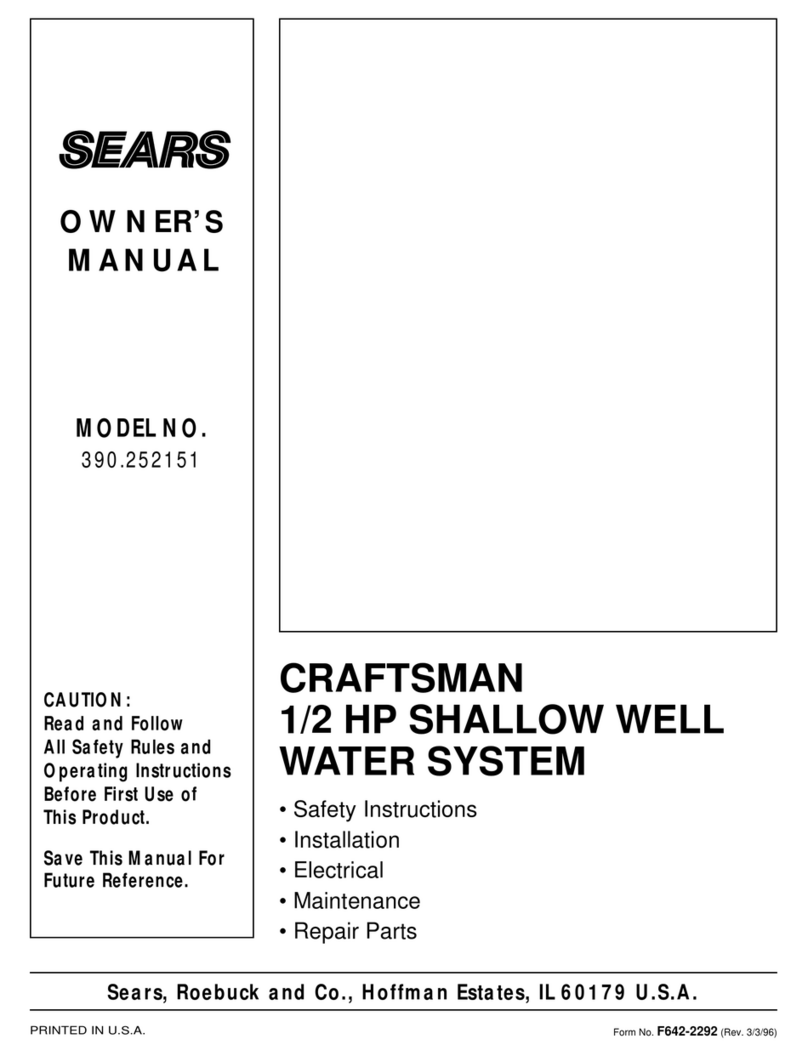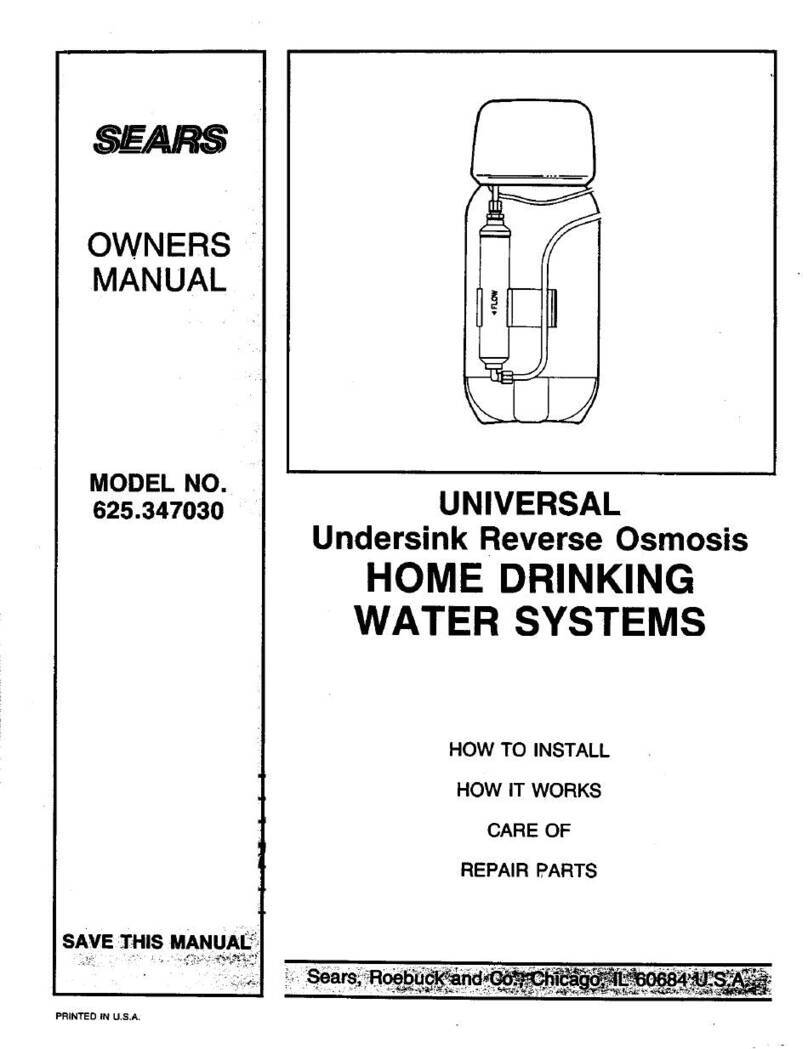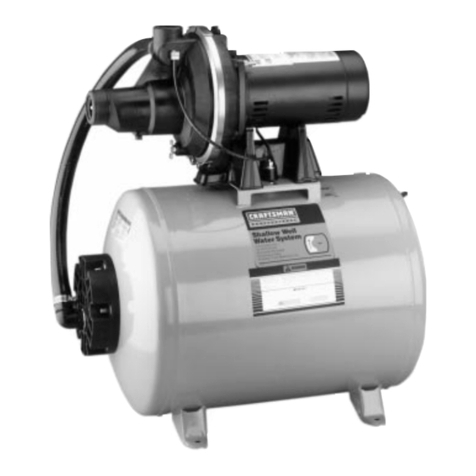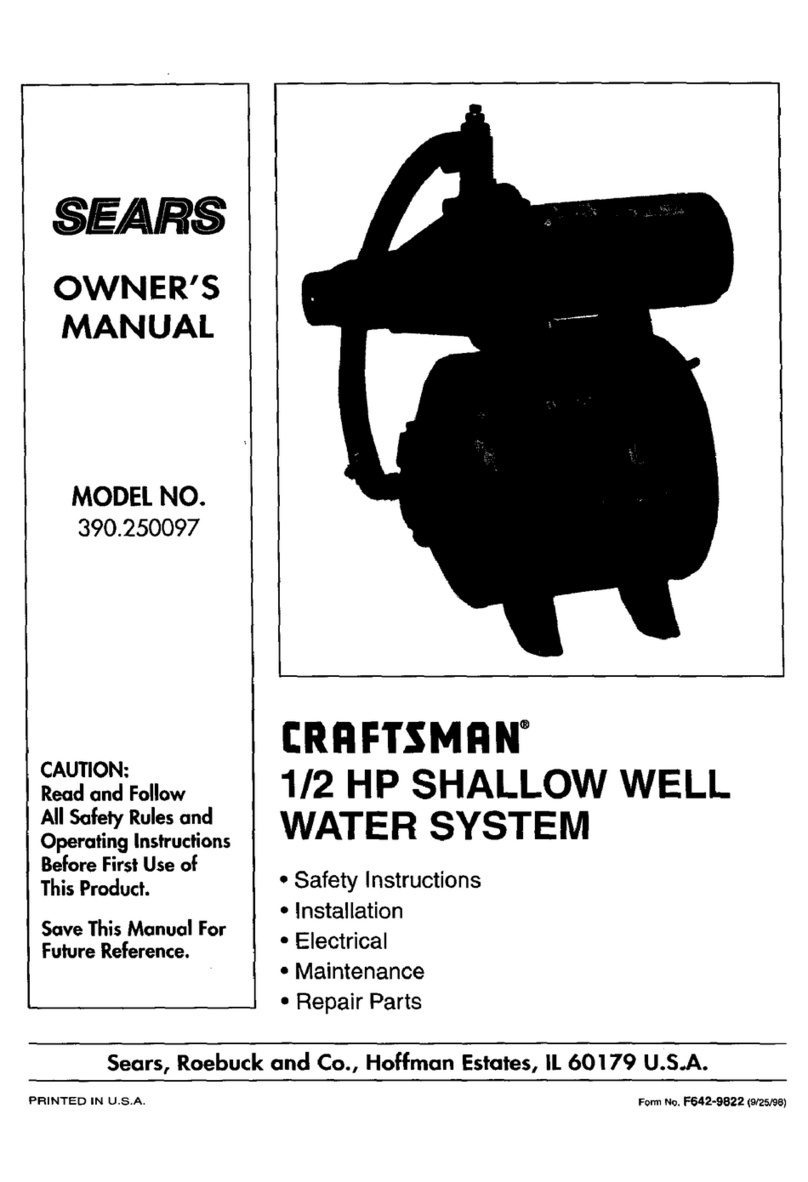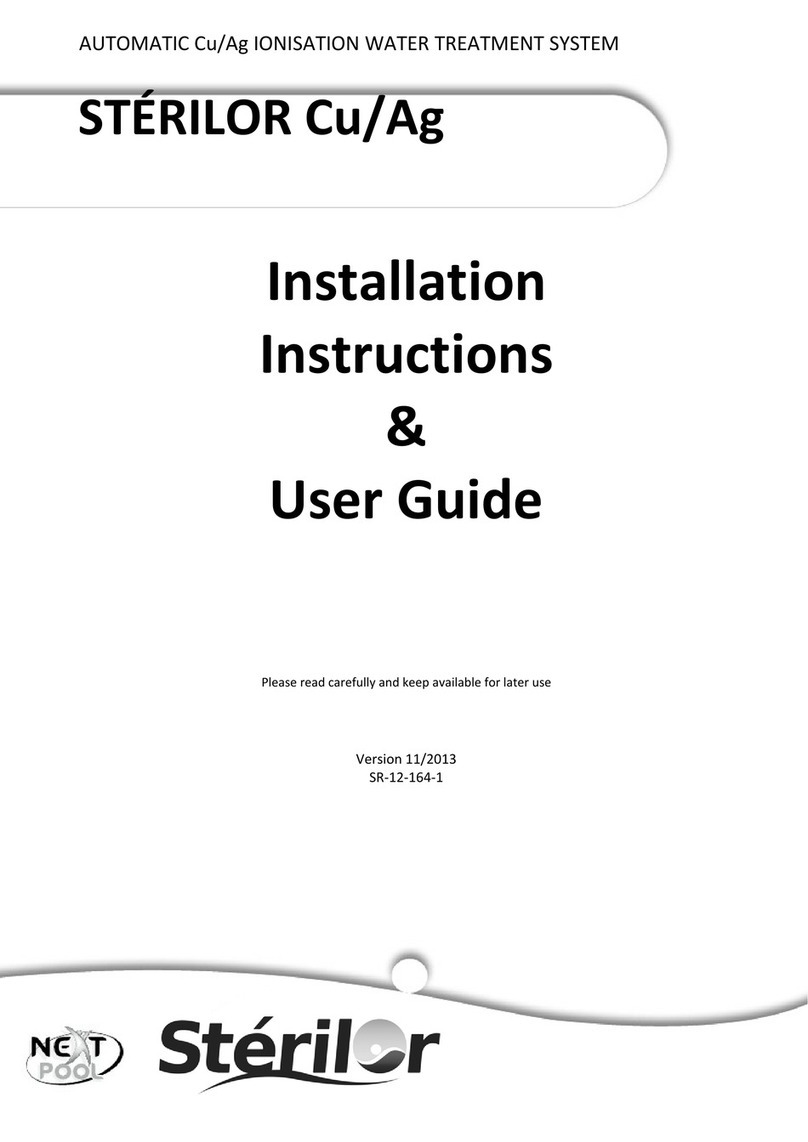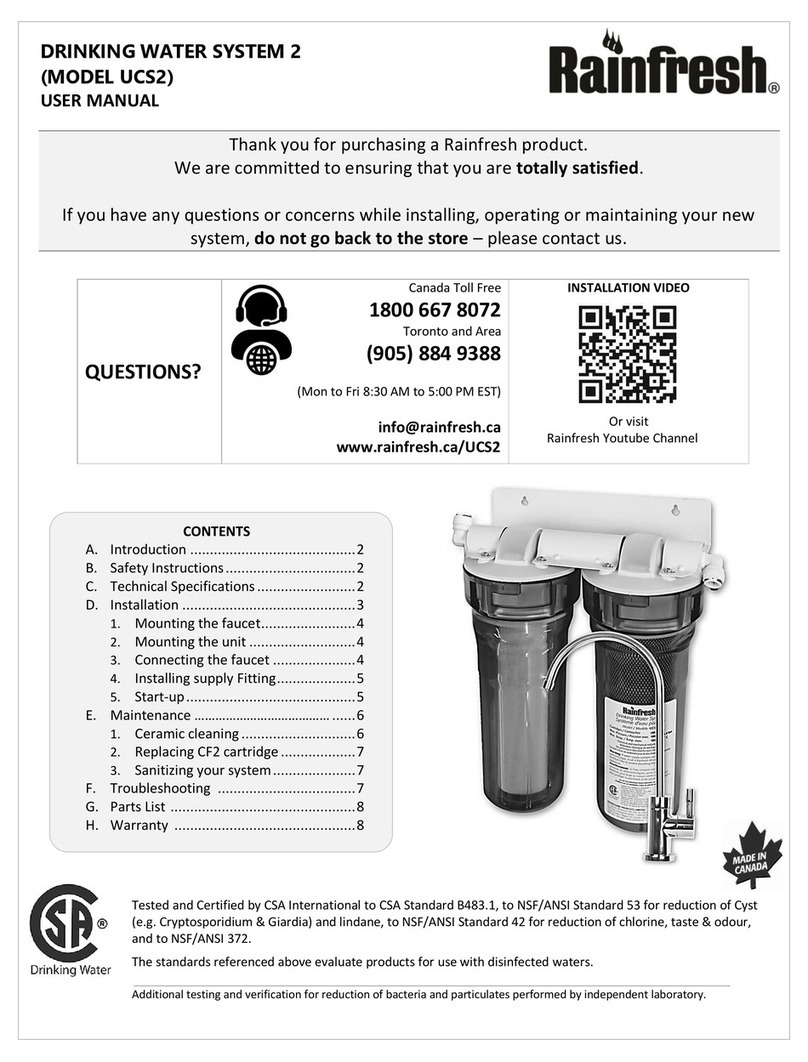2
CONTENTS
INTRODUCTION/WARRANTY..................................2
PUMP PERFORMANCE...............................................3
MAJOR COMPONENTS..............................................4
INSTALLATION........................................................4-5
ELECTRICAL...............................................................6
OPERATION...............................................................6
MAINTENANCE.....................................................7-10
HELPFUL HINTS.......................................................10
TROUBLESHOOTING GUIDE ..................................11
REPAIR PARTS .....................................................12-14
INTRODUCTION
Please read our instructions before installing and using
yourShallowWell WaterSystem. Thiswill helpyouob-
tain the full benefits of the quality and convenience
built into this equipment. It will also help you avoid
anyneedlessservice expenseresulting fromcausesbe-
yond our control which are not covered by our war-
ranty.
Carefully read and follow all safety instructions
in this manual or on pump.
This is the safety alert symbol. When you see
this symbol on your pump or in this manual, look
for one of the following signal words and be alert to
the potential for personal injury!
warns about hazards that will cause seri-
ous personal injury, death or major property damage if
ignored.
warns about hazards that will or can
cause serious personal injury, death or major property
damage if ignored.
warns about hazards that will or can
cause minor personal injury or property damage if ig-
nored.
The word NOTICE indicates special instructions
which are important but not related to hazards.
Neverrun pump dry.Running pumpwith-
out water may cause pump to overheat, damaging seal
and possibly causing burns to persons handling pump.
Fill pump with water before starting.
Never run pump against closed dis-
charge. To do so can boil water inside pump, caus-
ing hazardous pressure in unit, risk of explosion
and possibly scalding persons handling pump.
Motor normally operates at high temper-
ature and will be too hot to touch. It is protected from
heatdamageduring operationbyan automaticinternal
cutoff switch. Before handling pump or motor, stop
motor and allow to cool for 20 minutes.
1. To avoid risk of serious bodily injury and property
damage, read safety instructions carefully before in-
stalling pump.
2. Follow local and/or national plumbing and electri-
cal codes when installing pump.
3. Keepwellcoveredwhileinstallingpumptoprevent
leaves and other debris from falling into well, con-
taminating well and possibly damaging pump.
4. Protect pump and piping system from freezing.
Allowing pump or water system to freeze could
severely damage pump and voids warranty.
To avoid serious injury and equip-
ment damage, limit system pressure to 100
pounds per square inch (PSI) or below at all
times. Over-pressure can cause tank blowup;
install relief valve capable of passing full
pump volume at 100 PSI.
5. With a new well, test well for purity before use.
Consult local Health Department for procedure.
Hazardous voltage. Can shock,
burn, cause death, or start fires.
FULL ONE YEAR WARRANTY ON PUMP
For one year from the date of purchase, Sears will repair or replace well pump, free of charge, if defective in material or workmanship.
LIMITED WARRANTY ON SEARS HYDRO-GLASS®PUMP
After one year and through two years from the date of purchase, Sears will furnish, free of charge, a replacement part for any defective part. You pay for
labor.
This warranty does not cover repairs or replacement parts necessary because of abuse or negligence including failure to install, adjust and operate this
well pump according to the instructions in the owners manual.
FULL FIVE YEAR WARRANTY ON CAPTIVE AIR®TANK
For five years from the date of purchase, Sears will replace the tank free of charge, if defective in materials or workmanship. This warranty does not cover
repairs or replacement parts necessary because of abuse or negligence, including failure to install, adjust and operate this tank according to the instruc-
tions in the owners manual.
SEARS WILL NOT BE LIABLE FOR LOSS OR DAMAGE TO PROPERTY OR ANY INCIDENTAL OR CONSEQUENTIAL LOSS OR EXPENSE FROM
PROPERTY DAMAGE DUE DIRECTLY OR INDIRECTLY FROM THE USE OF THIS PRODUCT.
Some states do not allow the exclusion or limitation of incidental or consequential damages, so the above limitation or exclusion may not apply to you.
WARRANTY SERVICE IS AVAILABLE BY SIMPLY CONTACTING THE NEAREST SEARS SERVICE CENTER/DEPARTMENT IN THE UNITED
STATES of AMERICA.
For service outside the U.S.A., contact your local Sears Service Center or store.
This warranty gives you specific legal rights, and you may also have other rights which vary from state to state.
Sears, Roebuck and Co., Dept. 817 WA, Hoffman Estates, IL 60179
READ AND FOLLOW SAFETY INSTRUCTIONS!












